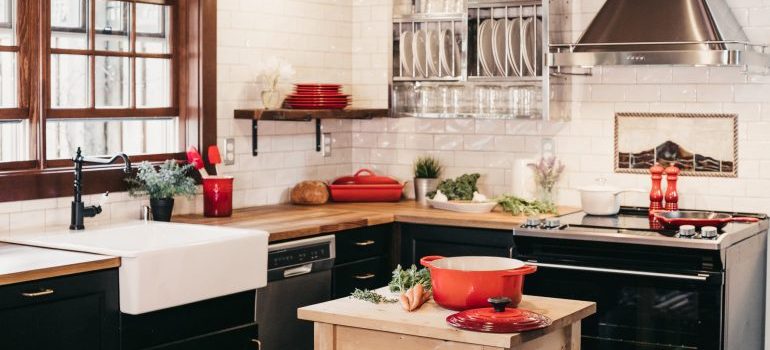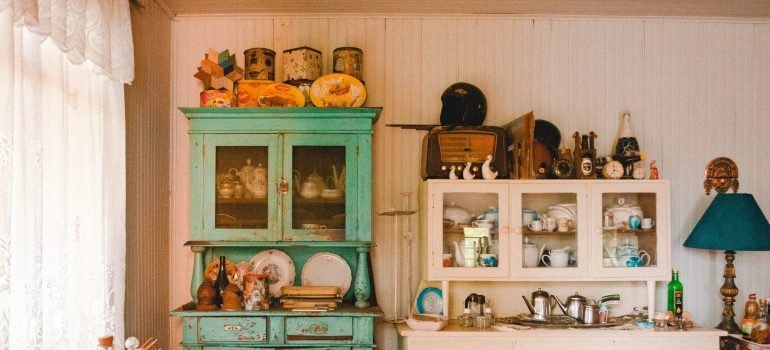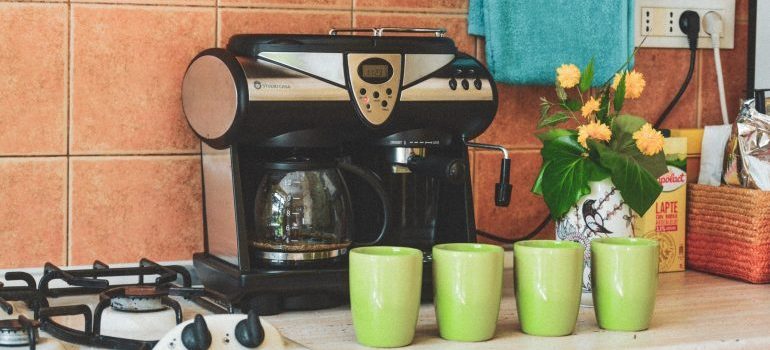Packing your kitchen: tips&tricks
As one of the finest moving companies NYC, we provide you with a seamless relocation experience!
GET A FREE QUOTE
There’s a reason you should never leave your kitchen for last when packing: kitchens are notoriously difficult and time-consuming to pack. They take quite a bit of specialized packing materials or at least creative uses of what you already have. And with so many things of irregular shapes and varying sizes to pack, you can’t expect to do it quickly either. But don’t despair! Nothing is impossible, including packing your kitchen. With the help of a few tips and tricks from the best NYC movers around, you’ll be packing like a pro in no time!
Before packing your kitchen: prepare and get organized
The first step towards successful packing is always in the preparation. It’s important to get organized before you get in the swing of things because there are so many things to do, especially when it comes to the kitchen. If you don’t organize properly, things will be quite chaotic and hectic. This translates to a lot of broken dishes and a waste of time. So if you’re not employing the help of residential movers NYC for packing and moving your kitchen, you’d better have a good plan for it yourself!

Gather the supplies
Before you start packing things, make sure you have the right packing materials! Here’s what you will need:
- moving boxes (regular or reenforced)
- padding for the boxes (you can use towels or blankets too)
- sectioned boxes for glasses
- unprinted wrapping paper
- other cushioning materials (bubble pack or packing peanuts, for example)
- sealing tape, labels, and markers
It goes without saying that you should always get more packing supplies than you think you need. You can easily get rid of the leftovers. Stopping what you’re doing to go hunting for more boxes because you’ve run out, however, is not fun.
Make a plan
Are you going to start with the dishware or the cutlery? If you’ve got help from friends and family, who is going to be doing what? Will you be using temporary storage NYC during the move or not? Are you labeling the boxes simply as “kitchen” or are you using more specific labels for what exactly is in which box? You must answer all these questions before you start packing because your answers will affect how you pack.
Food: what to eat, what to pack, what to get rid of
There’s always a big question mark above the food you still have in your kitchen when you start preparing for a move. If you’re moving long-distance, the general advice is not to bring food with you or at least to stick to the non-perishables. But if you’re moving locally, you have more options. You may, however, still want to stick to not bringing the food along with you because food takes time to pack and space to carry and doesn’t travel well. It’s just not worth the effort so:
- pack or donate non-perishables
- eat or get rid of fresh produce
- eat or get rid of liquids
Finally, remember that you will need to empty, thaw and clean your fridge at least a couple of days before the move. Heat-sensitive foods should be gone by then. You also won’t have much time to cook during the week of the move and especially on moving day so meal prep in advance is a good idea.
Packing your kitchen: the how-to guide
If you’re not using packing services NYC you will need to pack your kitchen yourself. This can be a bit tricky because the kitchen tends to have both a lot of appliances and a lot of fragile items that require special care. So make sure you start packing in time! Otherwise, you may be in trouble.
Dishes and glassware
Dishes and glassware are one of the most difficult things in the kitchen to pack and the main reason why many people leave packing the kitchen to their local NYC movers instead of doing it themselves. If you’re packing your dishes yourself remember to wrap them for protection. Fragile dishes and dishes of irregular shapes must be wrapped individually. You can, however, pack sturdier plates and dishes in bundles of four.

When it comes to glassware, don’t be afraid to use special packing supplies. Glasses, for example, will be a lot easier to pack and safer to transport if you use sectioned boxes. You should, however, still wrap them in paper if not bubble pack. You can also fill them with some crumpled paper, packing peanuts or fabric to stop them from breaking.
Pots and pans
Pots and pans are a lot sturdier than dishes and glassware so they’re not as difficult to pack. All you need to do is clean them properly. If you have any pots or pans that are especially sensitive (like non-stick pans or ceramic pots), be sure to wrap and protect those. Otherwise thing of pots and pans as nesting dolls: put the smaller ones inside the bigger ones to save space in your boxes.
Appliances
There are a lot of appliances in the kitchen, both big and small. Ideally, you would pack these in their own original packaging, just like all other appliances. Clean your small appliances first, disassemble what you can and then put them in boxes. If you don’t have the original packaging, use regular moving boxes. But make sure to keep all the pieces of a single appliance together.

Larger appliances require special care. The stove, for example, cannot be disassembled. So just clean it, unplug it (or turn off the gas) and get some help with loading it onto a moving truck. The fridge includes an extra step: you need to clean it, defrost it, then unplug it. Leave it to air dry for at least 48 hours before carrying it out.
After packing your kitchen: unpacking after the move
If packing your kitchen goes well, unpacking shouldn’t be a problem. As long as you label your boxes correctly, you’ll know exactly what to expect in each one. However, prepare for some losses even if you did everything perfectly. Moving can be unpredictable and the kitchen has a lot of fragile items. Some are bound to get broken.
